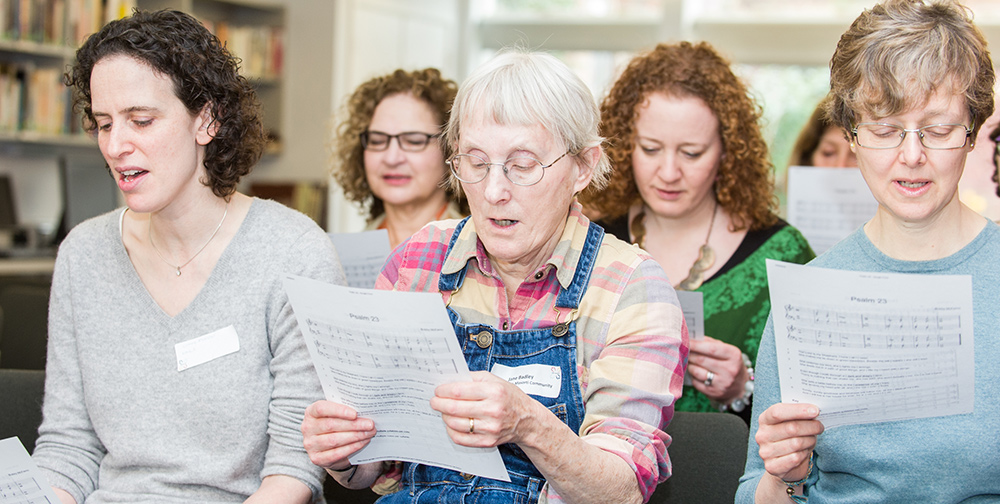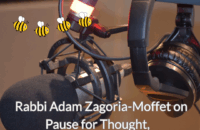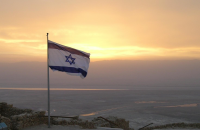Leadership: an inter-generational task

April 23, 1943, Warsaw Ghetto: “It is impossible to put into words what we have been through. One thing is clear, what happened exceeded our boldest dreams. The Germans ran twice from the ghetto. One of our companies held out for 40 minutes and another for more than six hours. The mine set in the “brushmakers” area exploded. Several of our companies attacked the dispersing Germans. Our losses in manpower are minimal. That is also an achievement. Y. [Yechiel] fell. He fell a hero, at the machine-gun. I feel that great things are happening and what we dared do is of great, enormous importance….”
This was not written by the leader of a Jewish military, or the official underground resistance. These are the words of a youth movement leader, the 24-year-old Mordechai Anielewicz. The Warsaw Ghetto uprising was the single largest Jewish uprising throughout the Holocaust. When one imagines this moment of resistance, a fragile attempt in the midst of unendurable terror, we picture senior leaders of the community heading the charge. The actual course of events was far from this picture.
It was the youth, the madrichim of the various movements, that united in calling for action. After seeing the mass deportation of Jews, which their contacts told them was to death camps, they attempted to persuade the Jews that it was revolution or certain demise. Three times they called meetings with Jewish leaders asking them to act, and three times they were told that the risks were too severe.
Upon seeing that the Jews of the ghetto were facing their final moments of survival, the youth movement leadership decided that they needed to take action themselves. There was no real question of escape. As Mordechai Anielewicz wrote, “The remainder will die sooner or later. Their fate is decided”. Yitzhak Engelman, a youth leader in a nearby ghetto, summarised their position: “We are today discussing two ways of dying. To move out into attack means certain death for us. The second way means death two or three days later.”
They were acting in desperation, aware that history would remember their most valiant of efforts. We can only admire such strength and maturity of thought. They were also exhibiting a leadership quality that is seen throughout Jewish history: they led because they were needed at a time of desperation. They did not seek to take charge, rather three times they sought for others to do so, though when it became clear that they were needed they did not retreat.
The clearest example of this in Jewish tradition is of course Moses. Eventually hailed as the leader of the people of Israel, he began as a reluctant shepherd. Only when he saw that his people’s future would depend on his actions was he willing to step forward. Before him, we observe this trait in Joseph, whose role in Egyptian society was born from the need to avert famine rather than being a quest for personal glory. They were both leaders who acted in a time of desperation, and who were seen as greater for it.
From Moses to the youth leaders of the Warsaw Ghetto, we reserve the greatest praise for those whose leadership was essential to our people and yet modestly delivered. These provide great inspiration for the Jewish youth movements of today. With such role models, we have a rich well of inspirational figures for our own young people to emulate.
The role of the youth movement varies across time. During the Shoah, they were required to step up to the mantel, assuming a burden of responsibility almost unthinkable in our world of relative safety. In a world where British Jews face no existential threat, our role is to educate and inspire the next generation. What has not changed is that we continually focus on leadership as a core element of how we contribute to the community. At Noam, it is our cornerstone. The intensity of our training for future madrichim is testament to the premium we place on hadracha (leadership). We know that it is our role to train those who will lead Masorti in the years to come.
Noam, along with other youth movements, provides the future intellectual capital of the community. The signs of this are ubiquitous. From pushing for a more diverse discourse on diaspora Zionism, to building more representative community institutions, the effects of the youth movements are clear. Within Masorti, Noam has continually been the champion of egalitarianism and other progressive values. We have promoted full gender equality for nearly two decades, and today are lobbying shuls to embrace same-sex marriages. We see this as a form of leadership, helping to build a community of chesed – acts of loving kindness.
In the coming years, there are challenges ahead where the young of our community will have a voice to contribute. With an Israeli peace settlement looking remote and rising anti-semitism in Europe, it is clear that our community will need to consider some major questions. Although we may be idealist at times, or on the progressive wing of the community, it is vital that each generation of Masorti is in a constant dialogue, continuing a conversation that began many thousands of years ago.
Despite this, Noam is not just about ideology or values. More often, we are a place of fun and escape. Just as we daw on a long tradition of Jewish leaders, our youth movement predecessors also show us the importance of escape and even frivolity. In the depths of Berlin in 1942, at the height of Nazi rule, the German Jewish scouts insisted on planning their annual day of celebration. In March 1942 they wrote a letter to the Jews in Israel and the diaspora describing their activities. They wrote that they thought none of them would survive, and yet they “sat in a big circle, and the room echoed to the sound of our singing. The candles flickered gaily and the members looked into the flames”.
Joel is the Mazkir of Noam, the Masorti youth movement. He is a member of Kol Nefesh Masorti, and next year will begin legal training.




